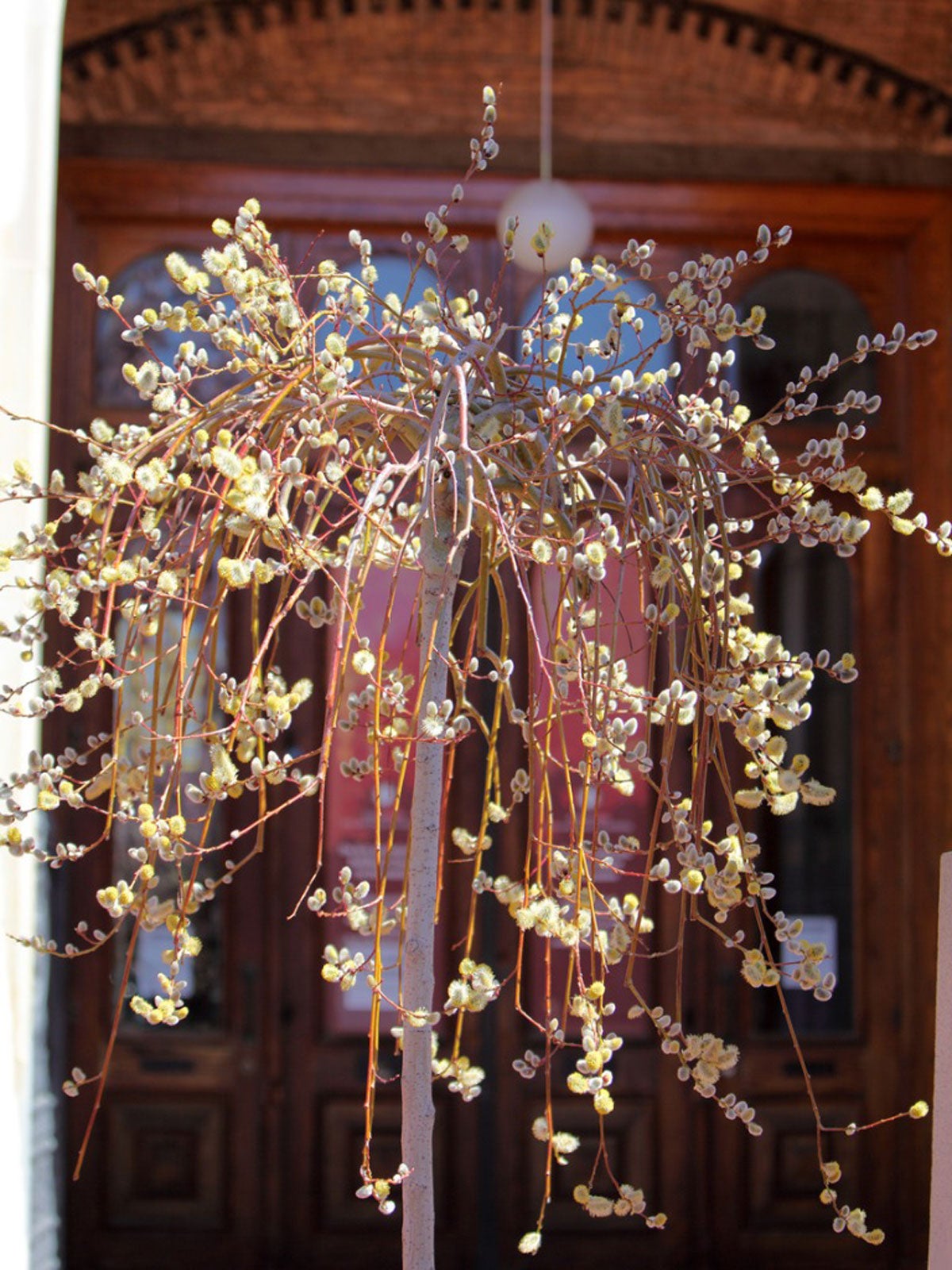
One type of pussy willow popular in this country is Kilmarnock willow (Salix caprea), also known as goat willow. The weeping variety of this species is called the weeping pussy willow, or Salix caprea pendula.
Weeping pussy willows can be very ornamental additions to your backyard in appropriate climates. You can even grow them in a pot in your garden or patio. If you are interested in growing potted Kilmarnock willows, read on for more information.
Potted Weeping Pussy Willow
In one sense of the word, every weeping willow has a weeping aspect since the tree’s leaves are long and pendulous. That’s what gives these beautiful trees their common name. However, the variety termed “weeping pussy willow” has more than leaves that droop. This variety of Kilmarnock willow also has arched branches that droop downwards.
This willow variety is naturally small, usually staying below 30 feet (9 m.) tall. Weeping pussy willows are even smaller and some are used for weeping willow bonsai plants. The small size makes it easier to grow in a pot.
Most gardeners appreciate pussy willows for their soft gray catkins— each is actually a grouping of many tiny flower buds. That’s why Kilmarnock blossoms start out as small white catkins and over time they mature into large blossoms with long tendril like flowers. These unusual trees have fast growing roots like many types of Salix.
It is possible to grow potted Kilmarnock willows in large containers. Not only must the container be large enough to hold the tree’s root system, but it must also have a large base. This will prevent your container grown Kilmarnock from blowing over during windy weather.
How to Grow Weeping Pussy Willow in a Pot
If you are interested in growing potted weeping pussy willow, your first step is to acquire a large container. If you live in an area with cold winters, select a wooden or plastic container so that it won’t break in icy weather.
For container grown plants, it’s best to mix up your own potting soil. Use two parts soil-based compost to one-part general multipurpose compost.
Kilmarnock willows are generally recommended for USDA plant hardiness zones 4 through 8. Place your container in full sun or at least afternoon sun. Inadequate sun will result in slow growth and few flowers. Regular and ample irrigation is key.
One type of pussy willow popular in this country is Kilmarnock willow (Salix caprea), also known as goat willow. The weeping variety of this species is called the weeping pussy willow, or Salix caprea pendula.
Weeping pussy willows can be very ornamental additions to your backyard in appropriate climates. You can even grow them in a pot in your garden or patio. If you are interested in growing potted Kilmarnock willows, read on for more information.
Potted Weeping Pussy Willow
In one sense of the word, every weeping willow has a weeping aspect since the tree’s leaves are long and pendulous. That’s what gives these beautiful trees their common name. However, the variety termed “weeping pussy willow” has more than leaves that droop. This variety of Kilmarnock willow also has arched branches that droop downwards.
This willow variety is naturally small, usually staying below 30 feet (9 m.) tall. Weeping pussy willows are even smaller and some are used for weeping willow bonsai plants. The small size makes it easier to grow in a pot.
Most gardeners appreciate pussy willows for their soft gray catkins— each is actually a grouping of many tiny flower buds. That’s why Kilmarnock blossoms start out as small white catkins and over time they mature into large blossoms with long tendril like flowers. These unusual trees have fast growing roots like many types of Salix.
It is possible to grow potted Kilmarnock willows in large containers. Not only must the container be large enough to hold the tree’s root system, but it must also have a large base. This will prevent your container grown Kilmarnock from blowing over during windy weather.
How to Grow Weeping Pussy Willow in a Pot
If you are interested in growing potted weeping pussy willow, your first step is to acquire a large container. If you live in an area with cold winters, select a wooden or plastic container so that it won’t break in icy weather.
For container grown plants, it’s best to mix up your own potting soil. Use two parts soil-based compost to one-part general multipurpose compost.
Kilmarnock willows are generally recommended for USDA plant hardiness zones 4 through 8. Place your container in full sun or at least afternoon sun. Inadequate sun will result in slow growth and few flowers. Regular and ample irrigation is key.
